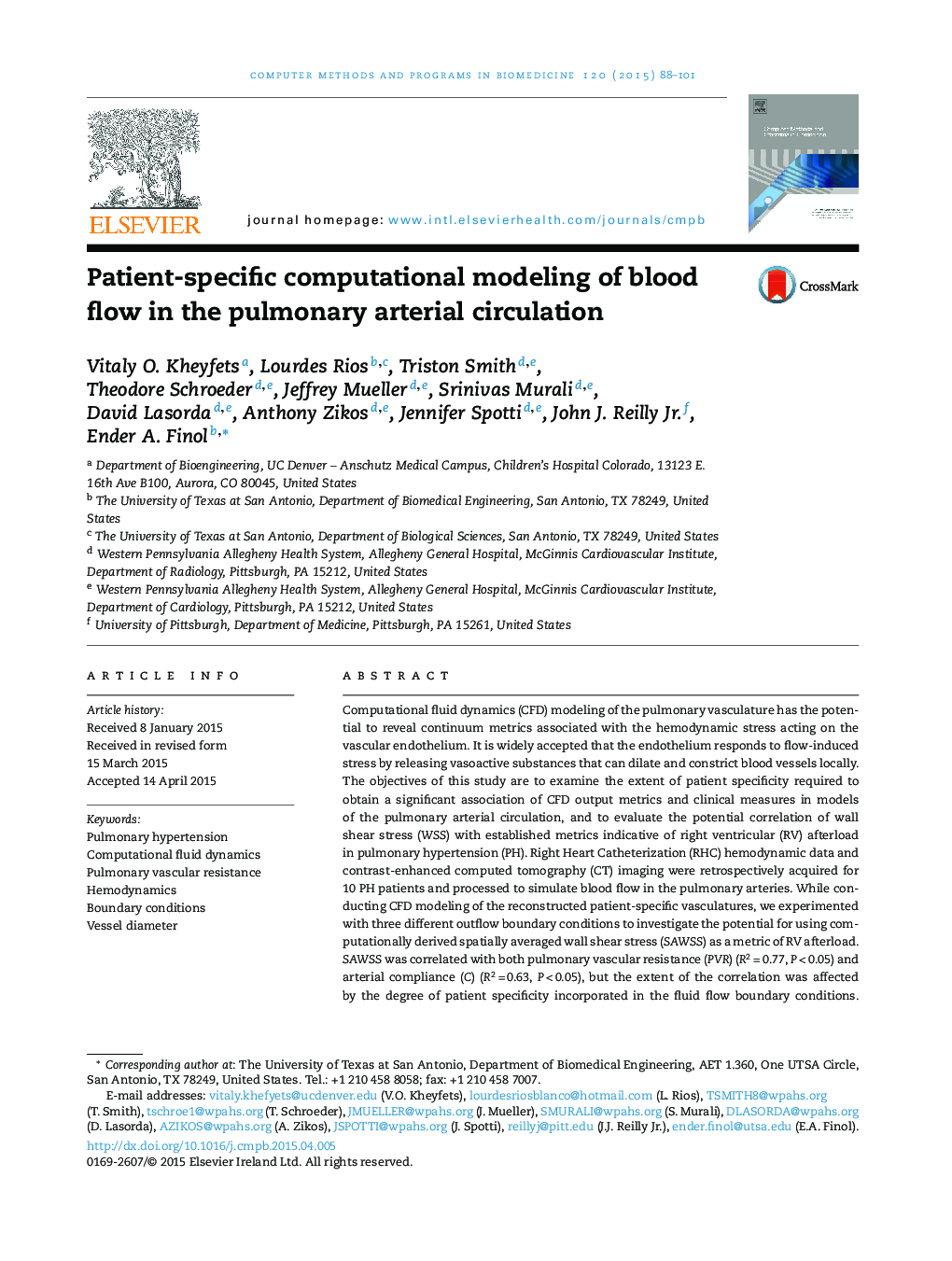| کد مقاله | کد نشریه | سال انتشار | مقاله انگلیسی | نسخه تمام متن |
|---|---|---|---|---|
| 469391 | 698313 | 2015 | 14 صفحه PDF | دانلود رایگان |
• We applied computational fluid dynamics modeling to 11 pulmonary vascular trees.
• Patient-specific cardiac output is necessary to obtain accurate wall shear stress.
• Spatially averaged wall shear stress is highly correlated with pulmonary vascular resistance.
• Spatially averaged wall shear stress is highly correlated with arterial compliance.
• Structured-tree outflow boundary conditions improve these correlations.
Computational fluid dynamics (CFD) modeling of the pulmonary vasculature has the potential to reveal continuum metrics associated with the hemodynamic stress acting on the vascular endothelium. It is widely accepted that the endothelium responds to flow-induced stress by releasing vasoactive substances that can dilate and constrict blood vessels locally. The objectives of this study are to examine the extent of patient specificity required to obtain a significant association of CFD output metrics and clinical measures in models of the pulmonary arterial circulation, and to evaluate the potential correlation of wall shear stress (WSS) with established metrics indicative of right ventricular (RV) afterload in pulmonary hypertension (PH). Right Heart Catheterization (RHC) hemodynamic data and contrast-enhanced computed tomography (CT) imaging were retrospectively acquired for 10 PH patients and processed to simulate blood flow in the pulmonary arteries. While conducting CFD modeling of the reconstructed patient-specific vasculatures, we experimented with three different outflow boundary conditions to investigate the potential for using computationally derived spatially averaged wall shear stress (SAWSS) as a metric of RV afterload. SAWSS was correlated with both pulmonary vascular resistance (PVR) (R2 = 0.77, P < 0.05) and arterial compliance (C) (R2 = 0.63, P < 0.05), but the extent of the correlation was affected by the degree of patient specificity incorporated in the fluid flow boundary conditions. We found that decreasing the distal PVR alters the flow distribution and changes the local velocity profile in the distal vessels, thereby increasing the local WSS. Nevertheless, implementing generic outflow boundary conditions still resulted in statistically significant SAWSS correlations with respect to both metrics of RV afterload, suggesting that the CFD model could be executed without the need for complex outflow boundary conditions that require invasively obtained patient-specific data. A preliminary study investigating the relationship between outlet diameter and flow distribution in the pulmonary tree offers a potential computationally inexpensive alternative to pressure based outflow boundary conditions.
Journal: Computer Methods and Programs in Biomedicine - Volume 120, Issue 2, July 2015, Pages 88–101
